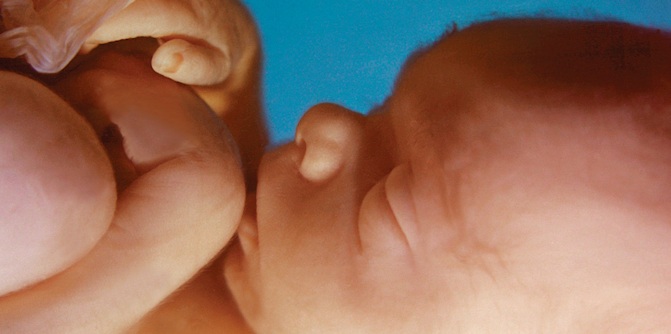A report presented at the 1977 annual meeting of the Association of Planned Parenthood Physicians described the negative feelings abortionists might have after performing D&E abortions (the procedure pro-lifers are calling a “dismemberment abortion”) .
At the time the paper was written, this technique was new. This new D&E technique consisted of essentially pulling the preborn baby apart with forceps and extracting her piece by piece. At the time the D&E was introduced, late term abortions were performed by injecting saline or another poison into the uterus and then inducing labor. Besides being risky for the mother, and causing her to suffer through labor, these abortions led to too many live births.
The D&E procedure, then, was hailed as a breakthrough. But it had its problems. One major problem was the emotional effect it had on doctors and other clinic staff. After all, they were dismembering a very human looking preborn baby.

The paper presented at the meeting said:
When performing a D&E abortion, the gynecologist is aware of being the active agent in the procedure. On the one hand, the doctor is sparing the patient the pain and emotional distress of the amnio abortion. On the other hand, he or she is the one who is crushing and dismembering the fetus in a D&E procedure, which can be emotionally disturbing… As the doctor tends to take responsibility and assume guilt for the procedure, she or he may have disturbing and recurrent ruminations or dreams. Doctors have found that these negative reactions decrease as they get used to the procedure, decrease if fewer D&E’s are done per session, and may depend on their feelings about the woman’s reason for needing a late abortion… Because of these problems, it is important that participation in D&E abortions be entirely voluntary, and that doctors have a chance to talk over their feelings with understanding colleagues or counselors.
The paper then described one dismemberment abortion in a clinical, emotionless way:
When the amniotic fluid had drained, the placenta and fetus were removed: the fetus was extracted in small pieces to minimize cervical trauma. The fetal head was often the most difficult object to crush and remove because of its size and contour. The operator kept track of each portion of the fetal skeleton in order to be sure of complete evacuation. Finally, a blunt or sharp curette, and a 12 mm vacuum aspirator were used, which often yielded additional tissue fragments. The patient was then transferred to the recovery room, watched for about 2 hours, and sent home with a friend.
You can see pictures of what a 20-week-old baby looks like after being subjected to a D&E dismemberment procedure (warning: extremely graphic)
Source: “2nd Trimester Abortion by Dilation and Extraction (D&E): Surgical Techniques and Psychological Reactions.”, Paper presented at the annual meeting of the Association of Planned Parenthood Physicians in Atlanta, Georgia, 13 – 14. October 1977 by Drs. Sadja Goldsmith, Nancy B. Kaltrevider, and Alan J. Margolis







